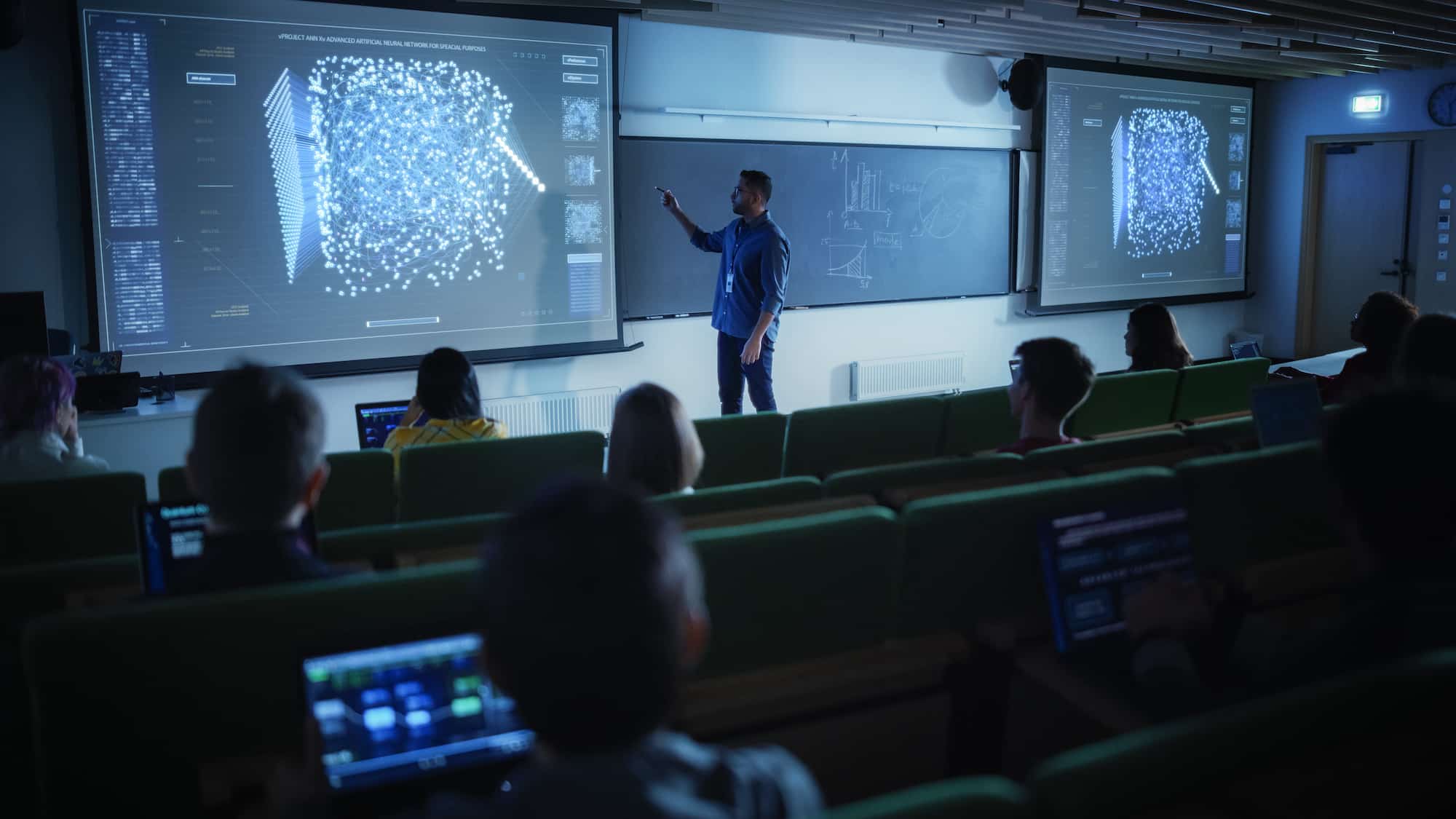Navigating the Future: Emerging Technology in Higher Education
As we navigate the intersection of education and technology, it’s clear that the future of higher education is being reshaped by groundbreaking technological advancements. Today, we are thrilled to share insights on the essential emerging technologies influencing higher education.
The Future is Now: The Imperative of Embracing Emerging Tech in Higher Education
The integration of technology in higher education is not just about keeping pace with trends; it’s about leading and innovating for the future. Here’s a list of those technologies as well as why and how colleges and universities must embrace these changes:
- Artificial Intelligence and Machine Learning: By integrating AI and ML, educational institutions can create adaptive learning environments that respond to the needs of individual students. This personalization is not a luxury but a necessity to cater to diverse learning styles and prepare students for a future dominated by AI-driven workplaces.
- Virtual and Augmented Reality: VR and AR are transforming the educational landscape from passive learning to active exploration. Institutions that incorporate these technologies can offer students unparalleled immersive experiences, making complex subjects more accessible and engaging. It’s about bringing learning to life in ways that traditional methods cannot.
- Blockchain: With its ability to provide secure and immutable record-keeping, blockchain is revolutionizing the way credentials are managed. Universities adopting blockchain are positioned at the forefront of credentialing innovation, ensuring integrity and global recognition of their academic programs.
- Internet of Things (IoT): IoT’s potential in optimizing campus operations and enhancing student safety is immense. Institutions leveraging IoT are creating smarter, more efficient, and safer learning environments, a key factor in attracting and retaining students in an increasingly competitive educational landscape.
- Big Data and Analytics: Big data isn’t just for businesses. For educational institutions, utilizing analytics means better understanding student needs, optimizing educational offerings, and making data-driven decisions that can dramatically improve institutional effectiveness.
- 5G Connectivity: As the backbone of modern communication, 5G’s ultra-fast, low-latency internet is essential for supporting the other technologies on this list. Universities that upgrade to 5G will be well-equipped to offer cutting-edge remote learning experiences and prepare students for a digitized world.
- Cloud Computing: Embracing cloud computing allows for unprecedented scalability and collaboration in academic research and learning. Institutions using the cloud can offer students and faculty flexible, on-demand access to resources, facilitating a more collaborative and innovative educational experience.
Each of these technologies plays a critical role in transforming education to be more personalized, immersive, and globally connected. Implementing them is crucial for preparing students for a future where these technologies are becoming ubiquitous.
Implementing Cutting-Edge Technologies: Starting Points for Universities
For universities looking to implement these technologies, the journey begins with strategic planning and the pursuit of pilot projects. It’s important to think about building a portfolio of these projects that address short term (low-hanging fruit) as well as long-term, transformational initiatives. Here are some key steps:
- Proof of Concepts (POCs): Start with small-scale POCs to explore how a specific technology can be applied in your university setting. This low-risk approach allows you to gauge effectiveness before full-scale implementation.
- Minimum Viable Products (MVPs): Develop MVPs for a more realistic picture of how the technology will work in a live environment. This step is crucial for understanding the resource requirements and potential challenges of wider deployment.
- Establishing a Center of Excellence (CoE): Create a dedicated CoE for each emerging technology. This hub will not only oversee the development and implementation of technology projects but also serve as a learning and collaboration center for students and faculty.
- Collaboration and Partnerships: Collaborate with tech companies, other educational institutions, and government bodies. These partnerships can provide access to necessary expertise, resources, and funding.
- Continuous Learning and Adaptation: Keep abreast of technological advancements and continuously adapt your strategies and tools. This ongoing process ensures that your institution remains at the cutting edge of educational technology.
Introducing “The University of 2030”
In an upcoming paper by Phil Magnuszewski, our Chief Innovation Officer and head of our Innovation Lab, “2030: A New Era in Academia – Transforming Higher Education,” Phil delves deeper into the future of universities, exploring how these emerging technologies will revolutionize the roles of students, educators, administrators, researchers, and even how sports and extracurricular activities are affected.
“2030: A New Era in Academia – Transforming Higher Education” is more than just a glimpse into the future; it’s a roadmap for educational institutions navigating this dynamic landscape. Stay tuned for its release and join the conversation on how we can contribute to shaping the future of higher education.
Stay connected. Join the Infused Innovations email list!
Share this
You May Also Like
These Related Posts

Artificial Intelligence in Higher Education: The Current State

Faculty Perspective on AI in Higher Education: An Interview with University of Rhode Island Adjunct Professor

No Comments Yet
Let us know what you think